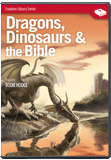
Paleo-sorting Morphs Three Dinosaurs into One
Abstract
Identification of fossilized species, especially for an entire group of extinct animals, can be challenging.
News Source
Things that are the same sometimes look different.
Psittacosaurus is a genus of gazelle-sized dinosaurs that are well represented in the fossil record. Fifteen species have been identified among specimens dug from Late Cretaceous rock in Asia. Three-dimensional imaging using a new method has now reduced that number to thirteen. This new technology could lead to better identification of other specimens, potentially reducing the number of distinct dinosaur species in other categories also.
Young and Old
Psittacosaurus has a parrot-like beak and is thought to have walked on its hind legs. Hundreds of specimens have been found in Russia, Mongolia, and China. Some investigators have previously suggested the actual number of species could be as few as nine.
University of Pennsylvania researchers have used a new technique to visualize the likely three-dimensional appearance of thirty Psittacosaurus specimens from China. They have determined that three of the specimens from China’s Lujiatun region are actually the same species. Two of the specimens have been reassigned as juvenile members of Psittacosaurus lujiatunensis.

These are front and lateral views of one of the Psittacosaurus specimens examined with 3D geometric morphometry. The precise depth and distance between each bony bump and curve is input into a data collection to produce a 3D image and to compare the features paleontologists consider to be the skeletal features most likely to be significant in defining a species. Image: B. Hedrick and P. Dodson, PLoS ONE.
Identification of fossilized species, especially for an entire group of extinct animals, can be challenging. Juveniles as well as adults of different genders can look quite different, with the differences going beyond mere size. (Such dimorphism is also seen in many animals living today.) Additionally, the process of fossilization can lead to great distortions. Fossils are generally formed by the catastrophic sudden burial of animals, and crushed rock-like sediment-encrusted specimens chiseled from a rocky matrix often leave a great deal of room for interpretation. These factors, combined with the often subtle distinctions by which new species are defined, can give the false illusion of distinctively different species.
“Because of the vagaries of fossilization, no two fossils are the same. Animals are alive and they die, but what's crucial in paleontology is what happens to the animals after they die,” explains paleontologist Peter Dodson. “Our study found all of these false ‘species’ that are not biological species but are apparent species caused by the process of fossilization.”
Because Psittacosaurus major and Hongshanosaurus houi from the Lujiatun beds of China’s Yixian Formation are apparently juvenile members of Psittacosaurus lujiatunensis, Hedrick and Dodson write, “The wide range of geometric morphometric variation in a single species of Psittacosaurus implies that the range of variation found in other dinosaurian groups may also be related to taphonomic [process of fossilization] distortion rather than interspecific variation.”
New Method
This is not the first time careful comparisons have shown that specimens thought to belong to different species were the same. This is however the first time that dinosaur data was collected and compared using this “three dimensional geometric morphometric” method. The authors explain, “Geometric morphometrics is an important method for demonstrating shape variation within a species given a large enough specimen sample size.” The method involves the identification and measurement of various landmarks on the available skulls. The data collected from surface scans and measurements is then transformed into a virtual 3D image for comparison.
“Three-dimensional techniques are critical when examining complex objects such as skulls, which vary greatly in depth between landmarks,” the authors explain. They note that there is a risk of error due to multiple data collectors and elapsed time between taking measurements; they minimized that in this study by having a single observer collect all the data in a short period of time. The major weakness in their study, they say, is the fact that there were only two skulls available from the Lujiatun beds for defining the standards for each species. The authors determined that some features previously defined as significant differences between species varied so much among the 30 specimens that they should not be considered distinctive.1
Speciation—the development of species—is not the same as evolution and only involves variation of genetic information already existing within each kind of animal.
This improved technique for more accurately visualizing a three-dimensional animal from a collection of squashed and hardened fossils is exciting and will, as the authors predict, doubtless decrease the number of species of other dinosaur categories too. Species and intra-species variation among living animals are great, and there is no reason to doubt that the same was true of dinosaurs. This variety did not result from evolution over millions of years, however. Just as in today’s world we can see speciation and variation within created kinds of animals develop quickly, we would expect that those same ordinary processes would have occurred in the original kinds of dinosaurs God created during the week of creation, which according to God’s Word was only about 6,000 years ago.
How Many?
How many different created kinds of dinosaurs were there? If we define a “created kind” as animals that can successfully interbreed, we see that many different genera and species could descend from a “kind.” Speciation—the development of species—is not the same as evolution and only involves variation of genetic information already existing within each kind of animal.
We cannot be dogmatic about the number of original kinds of dinosaurs. Paleontologists currently have names for about 700 dinosaur species grouped into 300 to 540 genera, with numbers varying widely depending on the validity of the classifications.2 Biblical creationists estimate that those 700 or so dinosaur species likely comprised around 50 different kinds, or families.3 Representatives of each kind of dinosaur would have been preserved on the Ark during the global Flood, so the vast majority of dinosaur fossils we have to examine are those that were catastrophically buried during the Flood just a few thousand years ago. Techniques like this should provide a more realistic assessment of dinosaur biodiversity.
Further Reading
For More Information: Get Answers
Remember, if you see a news story that might merit some attention, let us know about it! (Note: if the story originates from the Associated Press, FOX News, MSNBC, the New York Times, or another major national media outlet, we will most likely have already heard about it.) And thanks to all of our readers who have submitted great news tips to us. If you didn’t catch all the latest News to Know, why not take a look to see what you’ve missed?
(Please note that links will take you directly to the source. Answers in Genesis is not responsible for content on the websites to which we refer. For more information, please see our Privacy Policy.)
News to Know
Footnotes
- Brandon P. Hedrick and Peter Dodson, “Lujiatun Psittacosaurids: Understanding Individual and Taphonomic Variation Using 3D Geometric Morphometrics,” PLoS ONE 8, no. 8 (August 9, 2013): doi:10.1371/journal.pone.0069265.
- “How Many Types of Dinosaurs Are Known?,” US Geological Service, https://pubs.usgs.gov/gip/dinosaurs/types.html.
- Norell et al., Discovering Dinosaurs in the American Museum of Natural History, figure 56, pp. 86–87. See Czerkas and Czerkas, Dinosaurs: A Global View, 151. Cited in “What Really Happened to the Dinosaurs?”
Recommended Resources

Answers in Genesis is an apologetics ministry, dedicated to helping Christians defend their faith and proclaim the good news of Jesus Christ.
- Customer Service 800.778.3390
- © 2025 Answers in Genesis




